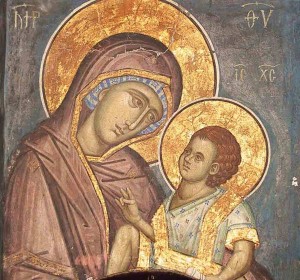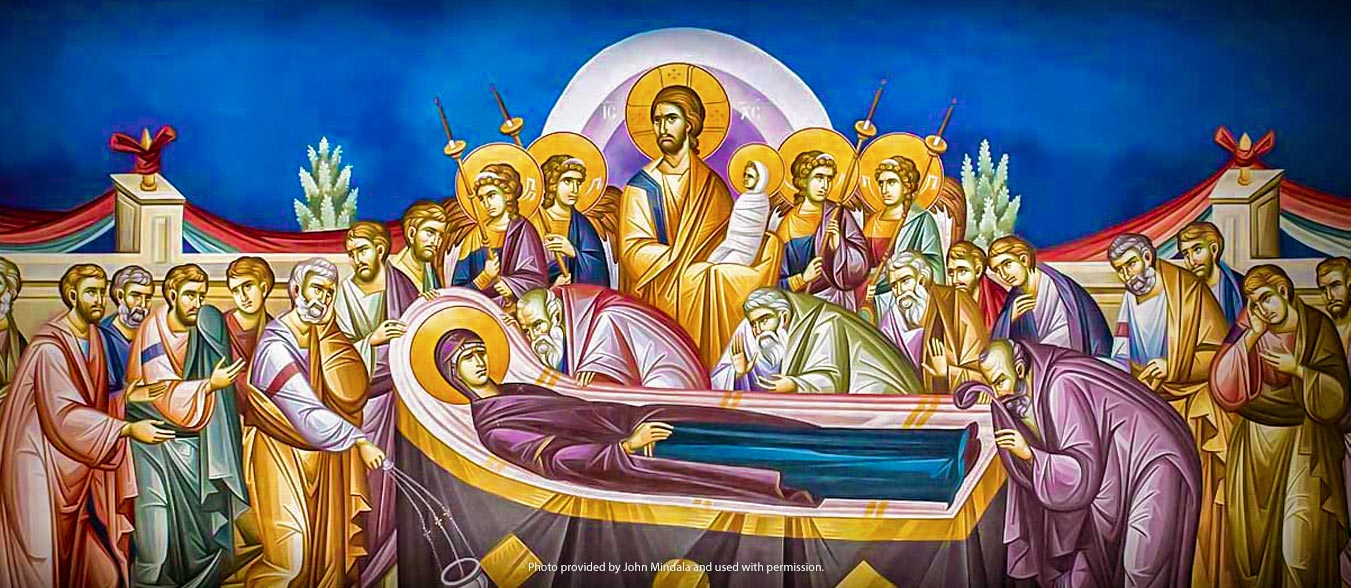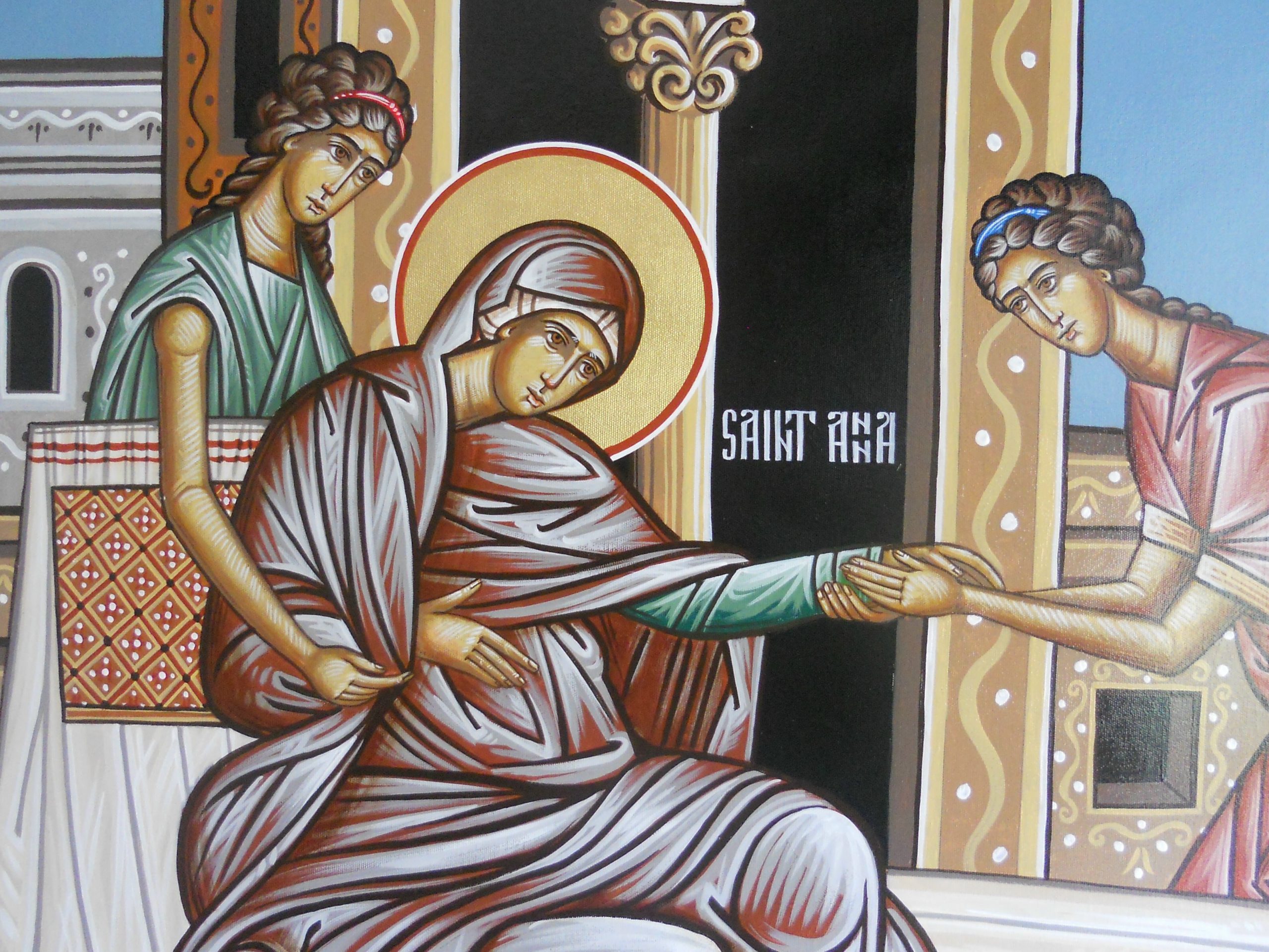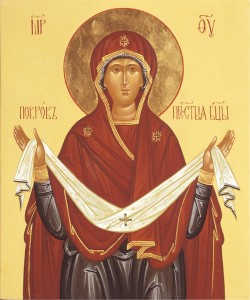 The beginning of the calendar year in the Missal of Paul VI is dedicated to Mary, Mother of God. The readings at Mass are still those connected with the older tradition of the Naming of Jesus, the circumcision of the Lord (according to the Mosaic Law). A new facet of the Incarnation of the Word. It is the eighth day since the Nativity. In the sacred Liturgy we commemorate the holy Child receiving the name Ieusha, Jesus, the Lord saves; the name given to us by the angel (Lk 1:31). What we get is a liturgical mess: is it a liturgical remembrance of Mary as the Mother of God, or the eighth day celebration of Jesus fulfilling the Law. The readings for this day of Christmastide give the clue, but I digress.
The beginning of the calendar year in the Missal of Paul VI is dedicated to Mary, Mother of God. The readings at Mass are still those connected with the older tradition of the Naming of Jesus, the circumcision of the Lord (according to the Mosaic Law). A new facet of the Incarnation of the Word. It is the eighth day since the Nativity. In the sacred Liturgy we commemorate the holy Child receiving the name Ieusha, Jesus, the Lord saves; the name given to us by the angel (Lk 1:31). What we get is a liturgical mess: is it a liturgical remembrance of Mary as the Mother of God, or the eighth day celebration of Jesus fulfilling the Law. The readings for this day of Christmastide give the clue, but I digress.
As a Marian feast day it seems appropriate to reflect upon what the dogma of the Theotokos (Mary, the Mother of God) means for us. To do so we need to look at a piece of Church history.
Much of the way we come to understand this dogma is to look at the problem that gave rise to a church council and a solemn acceptance of a Christology and a Marian teaching. Most of the early councils were called not by the Church but by the emperor. Historically speaking Pope Saint Celestine I did not personally attend the council but sent three representatives who knew his thinking and his expectations. Pope Celestine delegated Cyril to teach with pastoral sensitivity with the hope of brining the now famous and dissenting Nestorius back to the heart of orthodox Christianity.
By AD 431 the 50 year old theologian-monk Nestorius, educated in Antioch known for his great capacity to move people’s hearts by preaching. He was elected as the bishop of Constantinople by Emperor Theodosius II in 428.
One of Nestorius’ interlocutors was John Cassian, a monk in Egypt and disciple of Saint John Chrysostom. Cassian is accorded the title of Father of Monasticism in France and prolific author. (He is revered in some Church circles as a saint.) It is Cassian who helps to refine our Christology and what was later to become believed in the dogma of Mary as God’s mother.
In history we know that it was Nestorius who agitated for a change in church teaching on Christology. Recall that all that is said of Mary is a Christological statement of belief. Hence, Nestorius was not merely wanting to make a change in what we believe about Mary but what we believe about Jesus Christ, Savior. Nestorius began to reconsider how his people understand the mystery that Jesus Christ is equally God and man.
According to Nestorius the people think the humanity of Jesus was divine; that the people do not think that God was born in history, that God was buried, and professed that the Mary, the ever virgin, as bringing God forth in the flesh – that she is the Mother of God, Theotokos. Rather, he said that the Blessed Virgin Mary should really be called – Christotokos – the one who brought forth Christ, the mother of Christ. With great vigor he denied Mary the title of Theotokos. There is a theological difference in Jesus from Christ.
Then, as today, many people, laity and clergy alike, may not be well schooled in the details of theological and philosophical thought, nor would they be able to say with precision why a particular point about God and the economy of salvation is true or false. What we often see is that the Christian faithful echo —and believe— what is credibly taught in catechism and from the pulpit. The Church’s credible witnesses and teachers are given incredible authority when they often have not earned such. “Father said thus and such. Who are you to say otherwise?”
The people, hence, may not have clearly understood all the doctrinal errors that Nestorius was propagating through his preaching, but many did detect his choice in an alternative view when he declared that Mary was not the Theotokos. Those who knew in their gut something was wrong rejected Nestorius’ false teaching. Sometimes true piety is stronger than theological disputation.
It was a letter from Cyril to Nestorius that set the council fathers to define in certain terms what the true faith of Christians was with regard to Jesus and His mother. The letter that was read to the bishops declares that the patriarch of Constantinople, Nestorius, erred in his teachings. Cyril’s letter says,
“The holy Fathers do not hesitate to call the holy Virgin Theotokos, not in the sense that the divine nature of the Word took its origin from the holy Virgin, but in the sense that he took his holy body, gifted with a rational soul, from her. Yet, because the Word is hypostatically united to this body, one can say that he was truly born according to the flesh.”
Then, Nestorius’ letter to Cyril was read to the bishops. Thereafter, Nestorius was unseated from his position as patriarch of Constantinople and excommunicated; some branded him as “the new Judas.”
The faithful’s love for Mary could be seen in their declaration, “Hagia Maria Theotokos” (Holy Mary, Mother of God) and “Praised be the Theotokos.”
Ours is a Savior who is the Eternal Word of God, born of Mary, the Mother of God.






